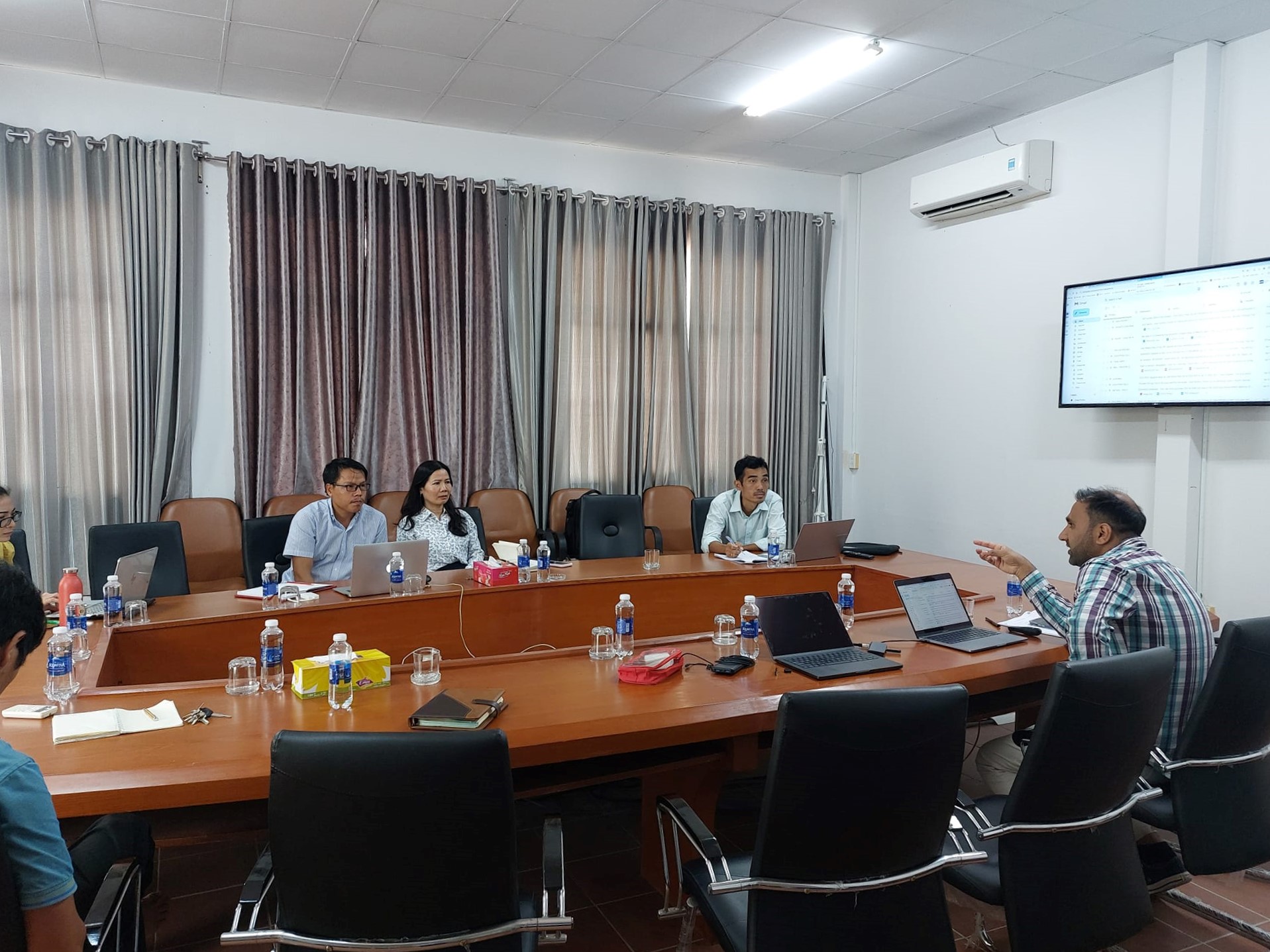CLRRI and IRRI identify 12 potential salinity-tolerant rice lines for the Cuu Long Delta

CLRRI and IRRI identified 12 potential salinity-tolerant rice lines for further evaluation in Vietnam’s Cuu Long Delta area. This is a step closer to identify the better salinity rice-tolerant genotype for Cuu Long Delta area.
CUU LONG DELTA RICE RESEARCH INSTITUTE (CLRRI), 15 April 2024— For the last 2–3 years, IRRI has screened more than 7,000 rice elite genotypes in coastal regions across South Asia and the Philippines. The unique integration of effective phenotypic screening with modern breeding approaches using genomics and quantitative genetics has helped identify more than 130 genotypes that are salinity-tolerant.
A subset from this collection underwent rapid screening and was field tested by the Cuu Long Delta Rice Research Institute (CLRRI) in a section of Vietnam’s mega-deltas which is immensely affected by increased salinity. IRRI’s collaboration with the CLRRI under the project "Securing the Food Systems of Asian Mega-Deltas through Identification of Salinity Tolerant Genotypes in Vietnam," under the OneCGIAR Initiative Work Package 1 for the Asian Mega-Deltas (AMD), ran three trials in Vietnam’s Cuu Long Delta coastal provinces such as Soc Trang, Kien Giang, and Tien Giang, during the dry season in the past year.
CLRRI’s Director Dr. Tran Ngoc Thach and Vice Director Dr. Nguyen Thuy Kieu Tien, emphasized the urgency and need for salinity-tolerant lines with high reproductive stage tolerance. In terms of quantity of rice production, Viet Nam is the fifth largest rice producer in the world, making the country a key contributor to food security not only in the region but also worldwide. However recent research shows that the mega-deltas are facing a major tipping point. The Cuu Long Delta is a part of the Mekong River Delta region, which is vulnerable to increased water salinity because of the continuing rise of sea levels due to climate change. This phenomenon has allowed more saltwater to flow inland. If this issue continues, over 100 million smallholder farmers in Vietnam will be significantly affected.
In response to CLRRI’s concern, IRRI Senior Scientist Dr. Waseem Hussain and Scientist Dr. Mahender Anumalla explained that the salinity trials and data analysis showed that 12 lines from IRRI outperformed their local counterparts. This means that these genotypes have the potential to survive in areas of the mega-delta with increased salinity intrusion. Hussain proposed to select these top-performing lines for further testing, aiming to identify the best genotypes for varietal release for farmers’ speedy adoption.
CLRRI emphasized the need to widen screening for varieties for adoption to salinity-affected areas, especially the Thoi Binh district in Ca Mau province, to achieve the area’s maximum productivity. “CLRRI will continuously cooperate on the evaluation and selection of new rice varieties tolerant to salinity conditions to ensure higher rice yields and productivity in the AMD.” Dr. Thach assures the group and members of their research team.

